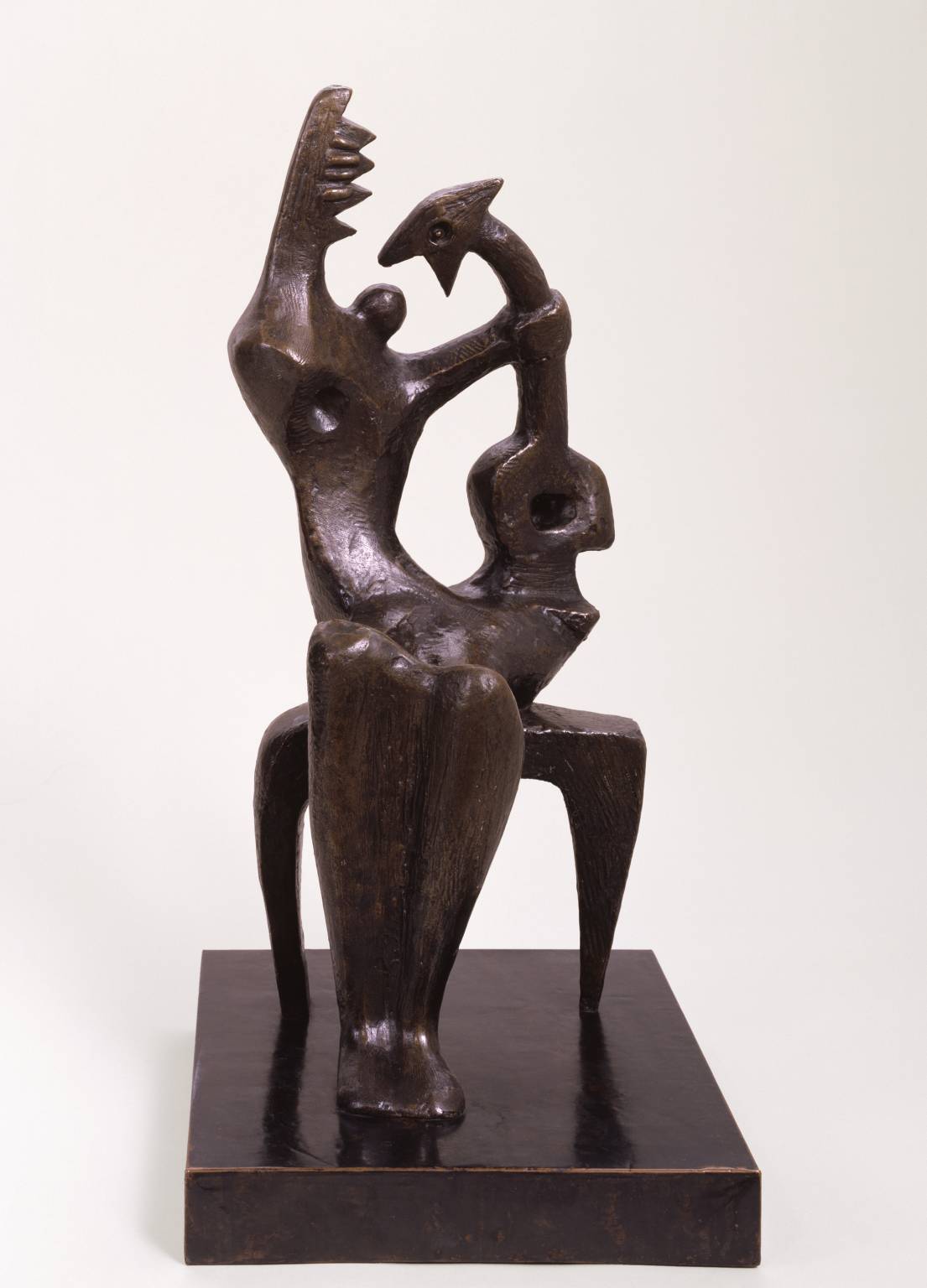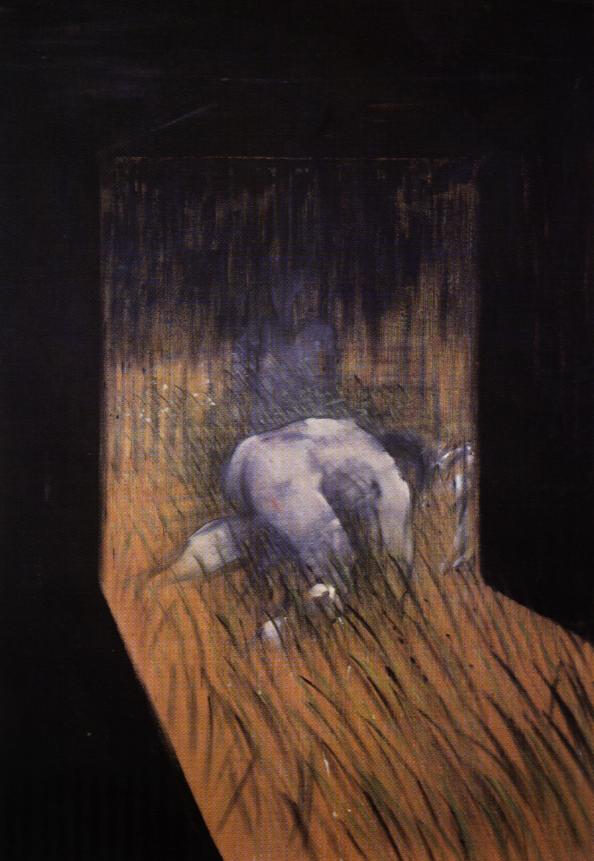The tortured British painter Francis Bacon, whose triptych recently set a new record for the most expensive artwork ever sold at auction, made his Canadian debut this spring at the Art Gallery of Ontario (AGO) alongside rarely-seen works by the British sculptor Henry Moore in the exhibition Francis Bacon & Henry Moore: Terror and Beauty. Featuring more than 130 artworks, including paintings, sculptures, drawings, photographs and archival materials, the exhibition explores the two artists’ shared fascination with the human form in relation to the violence of the Second World War and other key events of the 20th century. Organized in collaboration with the U.K.’s renowned Ashmolean Museum, the exhibition ran from April 5 to July 20, 2014.
Although they were neither friends nor collaborators, Bacon (b. 1909) and Moore (b. 1898) were contemporaries who shared an obsession with expressing themes of violence, trauma and conflict, both social and personal. Drawing on the artists’ personal experiences during the London Blitz and other conflicts, the exhibition examines how confinement and angst fostered their extraordinary creativity and unique visions.
Bacon, whose dark depictions of human torment have inspired several characters in popular culture, including the appearance of Heath Ledger’s Joker in The Dark Knight, was a sado-masochist who sought to process the trials of humanity through his canvases. A painter who embraced his passions and despairs, Bacon's work portrays the body as disfigured and deconstructed, often in states of confinement. However, he did not see his paintings as horrific but instead as life affirming, claiming, "I deform and dislocate people into appearance; or hope to.”
Internationally renowned for his large-scale, semi-abstract bronzes, Moore was a British war artist. His sculptures evoke endurance and stability, but when considered in light of his wartime experience, they read as an effort to rebuild and redeem the fragile human psyche and body. The exhibition, which offers in particular a new perspective on Moore, examines how the two artists reflected differently upon the same torment.
Bacon, whose dark depictions of human torment have inspired several characters in popular culture, including the appearance of Heath Ledger’s Joker in The Dark Knight, was a sado-masochist who sought to process the trials of humanity through his canvases. A painter who embraced his passions and despairs, Bacon's work portrays the body as disfigured and deconstructed, often in states of confinement. However, he did not see his paintings as horrific but instead as life affirming, claiming, "I deform and dislocate people into appearance; or hope to.”
Internationally renowned for his large-scale, semi-abstract bronzes, Moore was a British war artist. His sculptures evoke endurance and stability, but when considered in light of his wartime experience, they read as an effort to rebuild and redeem the fragile human psyche and body. The exhibition, which offers in particular a new perspective on Moore, examines how the two artists reflected differently upon the same torment.
The exhibition, which was guest-curated at the AGO by York University’s Dan Adler, featured numerous loans from The Henry Moore Foundation, Tate Britain, The Estate of Francis Bacon and MOMA, and was thematic in nature, pairing figural and abstract works to explore ideas of confinement, conflict and restoration.
Highlights included:
Highlights included:
- Bacon’s large Second Version of Triptych 1944, from the Tate Britain;
- Bacon’s Lying Figure in a Mirror, from the Museo de Bellas Artes, Bilbao;
- Moore’s iconic bronze sculpture Falling Warrior, on loan from Tate Britain;
- Moore’s lithograph Pandora and the Imprisoned Statues, from the AGO collection but never before displayed;
- more than 30 archival photographs by the acclaimed German-born British photographer Bill Brandt, including portraits of Moore and Bacon.
From an interesting review (images added)
Many of the works in Terror and Beauty were on view earlier this year at the Ashmolean Museum of Art and Archaeology at the University of Oxford as part of an exhibition titled Francis Bacon/Henry Moore: Flesh and Bone...All around, a viewer encounters voids bounded by the crooks of elbows, mouths agape in sleep or screams, bone structures that modulate and form outer skins, whether molded in bronze or paint. One of the more unexpectedly complementary pairings to emerge is
Moore’s Helmut Head and Shoulders and
Bacon’s Study for Portrait VI.
In each, the artist bilaterally splits the face and leaves a void where one would expect a mouth, resulting in a highly unnerving and disconcerting figure. While the subjects are dissimilar—one depicts a warrior, the other a pope—the horror of the World Wars is plainly reflected in both.
From another outstanding review (images added):
That light is the glare of Bacon’s white-hot fury and it’s an unforgiving one for most. Moore doesn’t emerge unchanged — this being the point, or a large part of it — but he is unbowed.
Moore’s Seated Woman: Thin Neck is placed next to
Bacon’s bright crimson Seated Figure,
depicting a man, naked, whose lower extremities are morphing and bent double into a birdlike form. Seated Woman is more jarring, a rough carapace sprouting a sinewy, angular twist from the peak of its heavily worked hide.
Bacon’s roiling, self-inflicted disasters (one inspired pairing puts a nastily fierce small-scale
Moore, Mother and Child (1953), between a pair of simmering Bacons,
Two Figures in a Room (1959) and
Man Kneeling in Grass (1952),
depicting faceless male figures in compromising positions).









